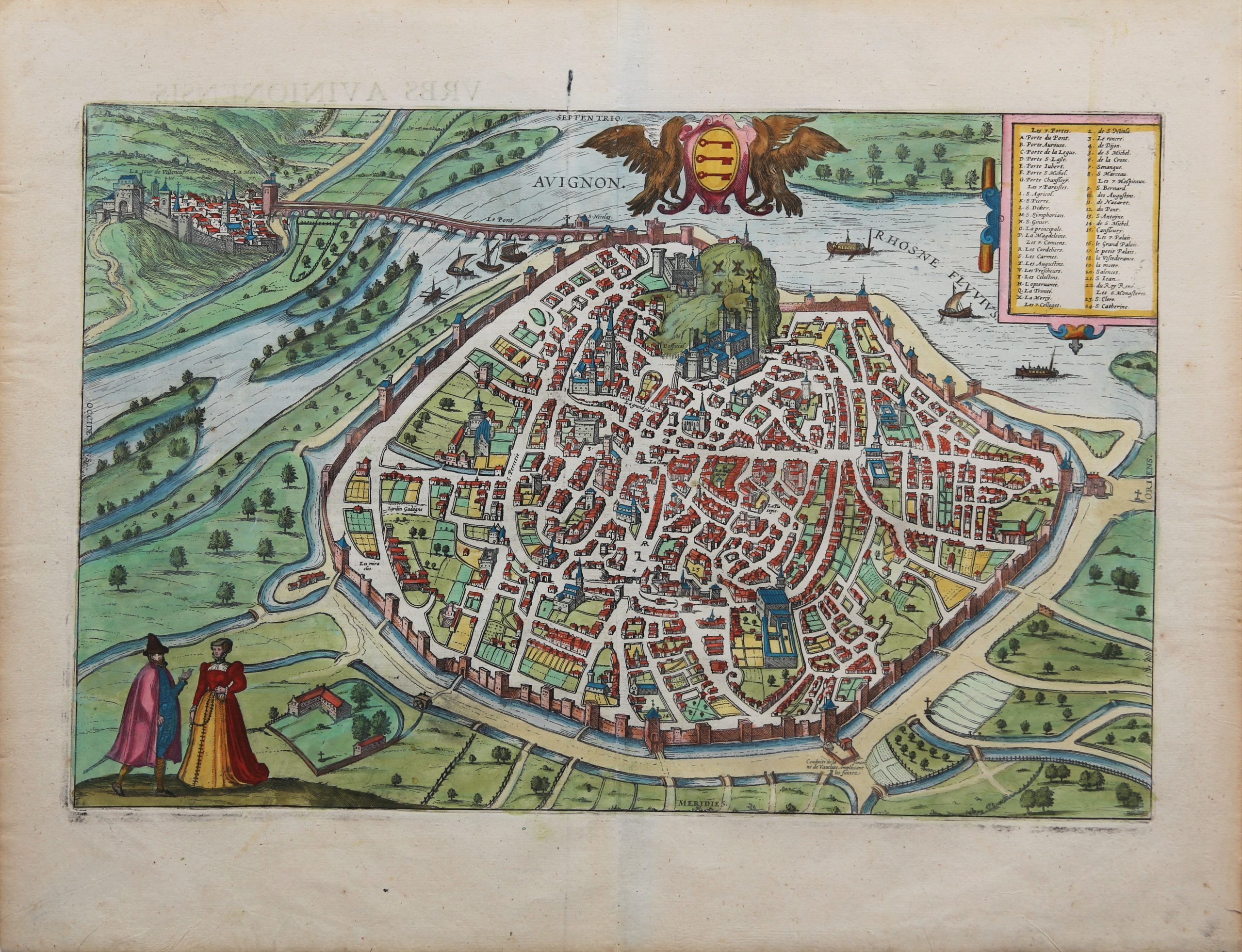Avignon
by
Georg Braun and Frans Hogenberg
Papal city²
Detail
Date of first edition: 1575
Date of this edition: 1623
Item number: 36008
Dimensions (not including margins): 31 x 47 cm
Condition: Very good. Sharp copper engraving printed on strong paper. Centre fold is as published. Old coloured. Wide margins.
Condition rating: A
Verso: text in Latin
Map reference: 4, 4, 326; Taschen, Br. Hog., p.150.
From: Civitatis Urbis Terrarum (II: De Praecipuis, totius universi urbibus, liber secundus), first published 1575, this edition 1623, Pëtrus Brachus, Köln. Van der Krogt 4,41:1.2.
Unless otherwise specifically stated on this map page, we charge the following expedition costs in euro (unfortunatelly, gone up with Covid, but still too low in reality!):
– Benelux: 40 euro
– Rest of Europe: 60 euro
– Rest of the World: 100 euro
This item is sold









Hogenberg’s Avignon : Papal city²
This old map shows a South view on Avignon, surrounded by the Rhône river with Villeneuve on the other side. The river link was made by the famous Saint-Bénézet bridge (1177-1185). Unfortunately, the bridge was largely destroyed by a flood in 1668: only 4 of the original 22 arches remain about, with (then as now) the chapel Saint Nicolas. And we all know the song concerning the Bénézet bridge: “Sur le pont d’Avignon”…
The city is dominated by the Palais des Papes (Grand Palais; No. 16), built from 1316 to 1370. It was the largest Gothic building from the European middle ages with a floor space of 15,000 m²,featuring 12 towers.
Seven Roman Popes resided in Avignon between 1309 and 1376. The coat of arms (three gold keys on red background) was introduced by Pope Clement VI as a symbol of his clerical and secular power. When Europe was ravaged by the plague in 1348 Clement VI went to live on one of the courtyards of the Palace; re lighted bonfires around him in order to purify the air for him. He survived since the fleas that spread the disease were stopped by the fire. Until 1779 Avignon remained Papal possession.